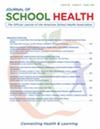Design, Psychometric Validation, and Network Analysis of the Evaluation Scale for Puberty Health Education Programs (EPHEP-Scale) for Students Aged 10–18
Abstract
Introduction
Puberty health, as a fundamental aspect of adolescent health, requires targeted and evaluated educational programs. However, to date, a comprehensive tool to measure the effectiveness of these programs has not been developed. Therefore, this study aimed at the design and psychometric validation of the Evaluation Scale for Puberty Health Education Programs (EPHEP-Scale) for students aged 10–18.
Method
To develop and validate this scale, a sequential exploratory mixed-methods design was used. The samples included 850 students aged 10 to 18 from four Arab countries. The study also utilized Exploratory Graph Analysis (EGA) from a network perspective.
Results
The results of the EFA and CFA showed that this scale includes six factors: Behavioral Reflexivity in Health Practices, Cognitive Resonance with Puberty, Transformative Impact on Self and Aspirations, Interpersonal Connectivity and Social Navigation, Emotional Synchrony and Adaptation, and Meta-Cognition and Reflective Learning. Additionally, network analysis further supported the six-factor structure of the EPHEP. These results indicate that the EPHEP-Scale is an accurate and reliable tool for evaluating puberty health education programs, making it suitable for use in various educational settings.
Implications for School Health Policy, Practice, and Equity
The EPHEP-Scale offers policymakers and school health practitioners a culturally validated, equity-focused tool to assess and refine puberty health curricula. By capturing psychosocial and behavioral dimensions, it enables targeted resource allocation, particularly in resource-limited or culturally diverse settings, and promotes equitable evaluation of program impacts across gender and regional contexts. Adoption of this instrument can support data-driven policy decisions to enhance access, reduce stigma, and ensure that all students benefit from high-quality, contextually relevant puberty education.
Conclusion
By providing a comprehensive framework to measure multiple aspects of puberty health development, the EPHEP enhances the effectiveness of these programs and enables their optimization for diverse student groups. With its broad impact on the design and implementation of educational initiatives, this scale plays a crucial role in improving the quality of life of puberties, as well as their mental and social well-being, ultimately fostering healthier and more informed generations across different communities.

 求助内容:
求助内容: 应助结果提醒方式:
应助结果提醒方式:


